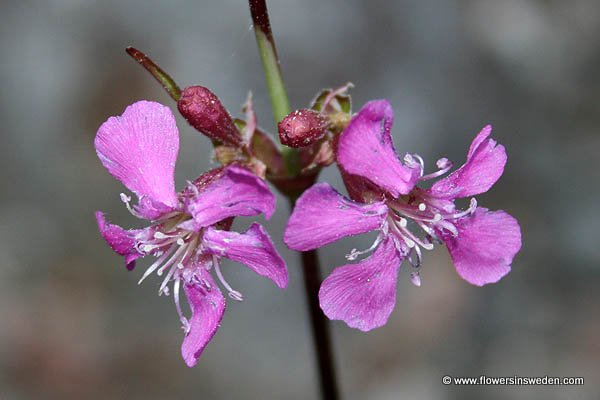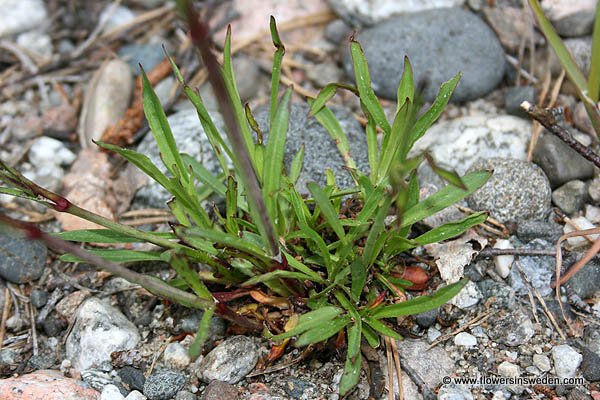
| Scientific name: | Lychnis viscaria L. | |
| Synonym name: | Silene viscaria (L.) Borkh. | |
| Swedish name: | Tjärblomster | |
| German name: | Gewöhnliche Pechnelke | |
| Nederlandse naam: | Rode pekanjer | |
| English name: | Sticky catchfly | |
| Plant Family: | Caryophyllaceae, Pink family, Nejlikväxter |

|
| Life form: | Perennial | |
| Stems: | Erect, unbranched, glabrous, underside of joints sticky and dark reddish brown | |
| Leaves: | Rosette of long, lance-shaped, dark green leaves | |
| Flowers: | Purple, pink, tubular, star-like flowers | |
| Flowering Period: | May, June | |
| Fruits: | 5-valved, 6–9 mm long capsule | |
| Habitat: | Bogs, marshes, pastures and meadows |

Derivation of the botanical name: Lychnis, Greek lychnos, a lamp; in allution to the flame-colored flowers. viscaria , viscum, birdlime: a sticky substance used to catch birds and made from mistletoe or holly; arius, adjective suffix for nouns or numbers: connected to or possessed by; sticky Silene, probably from Greek sialon, "saliva," referring to gummy exudation on stems, and/or named for Silenus, intoxicated foster-father of Bacchus (god of wine) who was covered with foam, much like the glandular secretions of many species of this genus.
|